

The end of the road for toilet roll?
They’re indispensable in Asia, but are yet to catch on here in Europe – for now. Bidets or shower toilets are touted as a more hygienic and eco-friendlier alternative to toilet paper. But are European bottoms ready for this revolution?
I was slightly regretting agreeing to this test, sitting with a bidet lid on the number 4 tram and trying to hide the cardboard box behind my legs as much as possible. It was pretty uncomfortable to think about other people imagining me having my behind sprayed by a shower toilet. I just had to get through it. After the tram, there was just the train to deal with and then I was finally back at home. Then, however, I became acutely aware that getting there was the easy part: now I had to actually test the toilet seat and report on my findings…
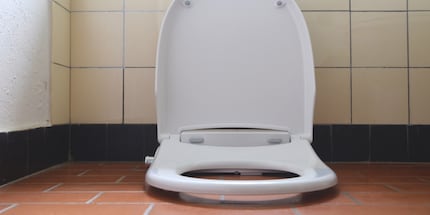
Who invented it?
First up, the backstory of the shower toilet. In contrast to the bidet, whose only function is cleaning, the shower toilet combines this with going to the toilet. Switzerland’s Hans Maurer is the brain behind this product, marketed as the Closomat. Today, shower toilets are primarily popular in Asia, while we Europeans prefer toilet paper. However, Switzerland heads up the rest of the continent with around 10 per cent of the market share. Saving toilet paper certainly has hygienic and environmental benefits: the pipes stay clear and your bottom should be cleaned more gently and effectively. According to doctors, there are circumstances where it’s much better not to clean intimate areas with dry toilet paper, such as during the postpartum period for women.
Precursor to disaster
Now the background is sorted, it’s on to installation. The contents of the box are pretty straightforward: seat, valve, set of screws, instructions – and even they’re kept to a minimum. “It can’t be too hard then,” I thought to myself. First, I had to remove the old seat, which was child’s play, thankfully. I just had to loosen the nuts on the screwing device and the lid came away. Then I attached the new, heavier Diaqua Lavalino in the same way. Now I could sit down, but I still had to get the most important feature – the bidet function – up and running.
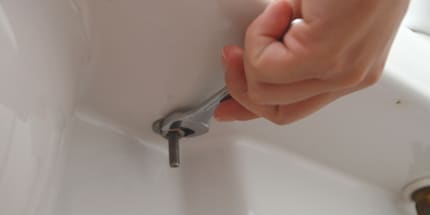
Unfortunately, the packaging was all too clear: the supply hose was missing. I should have noticed when I unwrapped it, but my thoughts were apparently too occupied with the social stigma of going to the toilet. André Pereira de Almeida, Product Manager for our DIY department, tells me that this is common. However, as I don’t have a lot of experience with toilet seats, I didn’t know. There wasn’t anything about the missing hose in the Galaxus product description either. This has now been rectified, so you won’t have to endure the same fate as me: I had to take an enforced break and wait for the 3/8 x 3/8 supply hose.
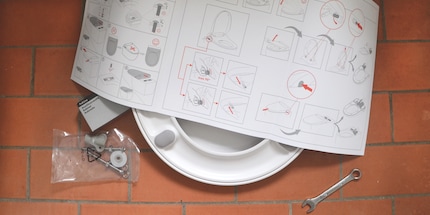
At least I could test out the seat in the meantime. It’s a bit different to my old one. To start with, it felt like I was tipping forwards because the back part is a little wider than a conventional toilet seat to accommodate the bidet function. By the second trip, though, I’d pretty much got used to it. What I really liked was the kind of click mechanism, which made the seat easy to remove for cleaning.
I hate my apartment
The hose arrived and I could finally test the vital function. I wish. My apartment’s age (sometime pre-war) means that it has a few quirks, the water supply to the toilet being one of them. The connection above the cistern looked promising due to its proximity and lack of use, so I wouldn’t have to attach anything new. How wrong I was. The connection turned out to be a dud. Once the protective cap was off, it soon became clear that the thread was too short. The supply hose wouldn’t hold, so the whole connecting piece had to come off. But first, I set off to my car that was parked in a friend’s car park 15 minutes away. Once that was done, after a few minutes’ whinging, the connecting piece was off. But – how else could this have played out – it was to no avail. The nut was removed, but nothing happened. It would have to be held together via different means. Reluctantly, I gave up and made a mad dash to the DIY store for another hose (3/8 x 1/2 this time) to connect the shower toilet seat to the bath valve.
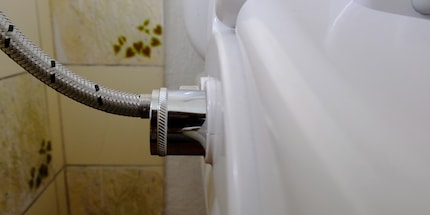
Another round, another chance
I connected the hose to the bath valve and, this time, it all held. It had taken long enough, but that was down to my flat rather than the product itself. In high spirits, I set about trying it out straight away. Big mistake. If your bottom isn’t fully covering the seat, everything gets sprayed all over the floor. After I’d cleaned up, it was time for the reality check. It’s quite strange, but I can see that it would be useful and practical for some people. What bothers me, though, is drying. Or are you just meant to pull your trousers up? Of course not. This is where the notorious toilet paper comes in. This model doesn’t work without it, but you need a lot less than if you were using a conventional toilet. Two or three sheets should be plenty.
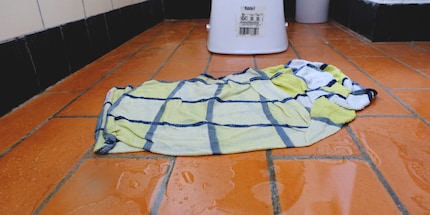
Verdict
The Diaqua Lavalino toilet seat with shower function is easy to install, holds well to the bowl and has a practical soft close mechanism. Its click mechanism also makes it easy to remove, which takes the stress out of cleaning. That said, I just couldn’t get used to going to the toilet followed by a water fountain. Toilet paper has been my trusty companion for 27 years, and it’ll stay that way for a while longer. Maybe I just need more time, or a pregnancy, to really appreciate it.

My life in a nutshell? On a quest to broaden my horizon. I love discovering and learning new skills and I see a chance to experience something new in everything – be it travelling, reading, cooking, movies or DIY.